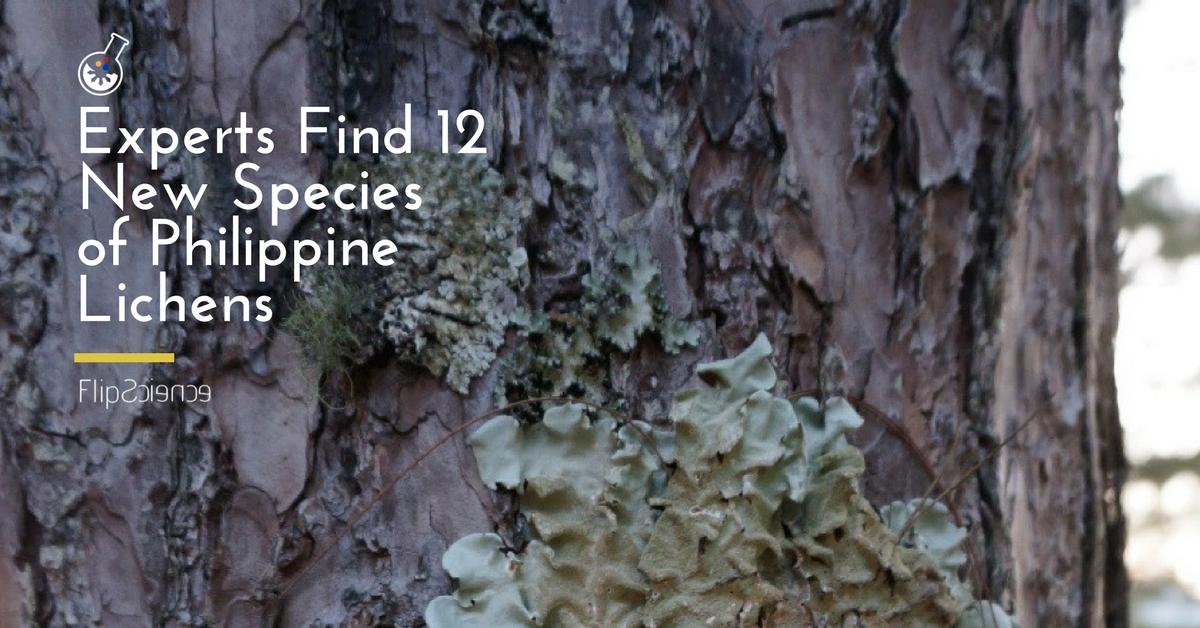Findings from a recently published study in the Philippine Journal of Science revealed 12 new species of lichen living in Philippine mountains.
Paulina Bawingan and her team of researchers reported a total of 30 identified Parmotrema species in their study. There is currently no confirmation that the newly discovered species are endemic to the Philippines; however, this discovery emphasizes the need for exploration of the country’s rich lichen diversity.
A quest for lichens
Bawingan, a lichenologist from Baguio’s Saint Louis University, led a team to explore the forests of Benguet, Ifugao, and Mountain Province for samples. The team had support from the Department of Environment and Natural Resources (DENR) via its Gratuity Permit.
The researchers also partnered up with experts and lichenologists, both local and foreign, in order to collect, study, and identify the species of Parmotrema obtained from the aforementioned forests, as well as Mt. Apo, Mt. Kitanglad, Ilocos Norte, Pangasinan, Isabela, and Nueva Vizcaya.
Using microscopes, the researchers identified the morpho-anatomic features and chemistry of the lichens. They also spot tested the samples, dropping specific chemicals on select parts of the lichens and observing the resulting color change or unique chemicals.
Lichens with pores
A lichen (or lichenized fungus) is comprised of two organisms in symbiosis. The fungus provides shelter, minerals, and water for the lichen, while the alga, or cyanobacterium, sustains the lichen through photosynthesis. There are around 17,000 lichen species all over the world. In 2016, researchers discovered that yeasts cover the outer layer (cortex) of the lichens. They produce chemicals that repel would-be predators.
Parmotrema, derived from the Greek words for “cup” (parmosor) and “perforations” (trema), is the term used for the group of lichens with apothecia (pores). Through their apothecia, lichens produce spores for reproduction. These species are often found in high-altitude mountains, growing on the barks of trees and on rocks in the forests.
Lichens are known to be sensitive to atmospheric pollutants, making them useful for pollutant remediation. Bawingan shared that she currently has PhD students doing research on antimicrobial and anticancer properties of lichens. Unfortunately, lichens are constantly at risk due to the deterioration of our forests.
“We cut down the trees, we eliminate also the lichens. If we conserve the forest, we conserve the other organisms that use them as habitats.”
The authors are optimistic that the study will inspire younger scientists to study the lichen diversity of the country. –MF
The full article of “Philippine Species of Parmotrema (Ascomycota, Parmeliacaea)” can be downloaded for free in the PJS Volume 146 No. 2 at philjournsci.dost.gov.ph. PJS, published by the Department of Science and Technology – Science and Technology Information Institute, is the oldest journal in the country.

Author: Mikael Angelo Francisco
Bitten by the science writing bug, Mikael has years of writing and editorial experience under his belt. As the editor-in-chief of FlipScience, Mikael has sworn to help make science more fun and interesting for geeky readers and casual audiences alike.






